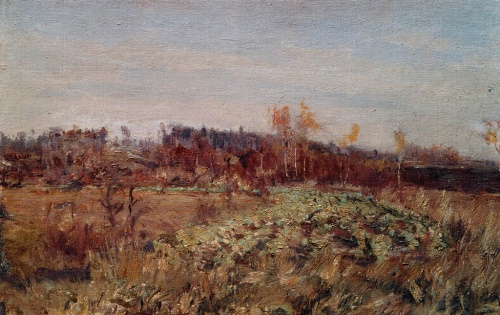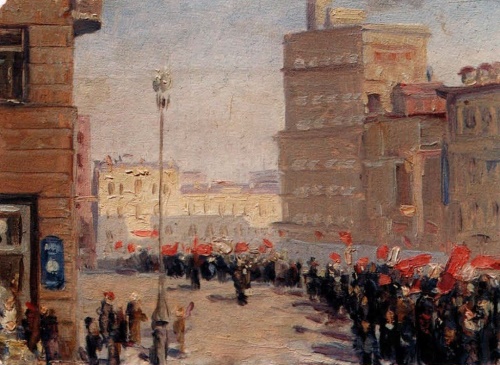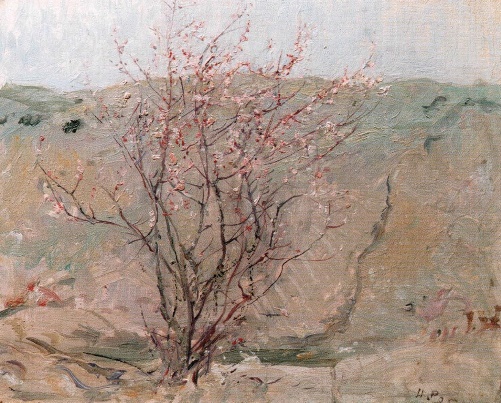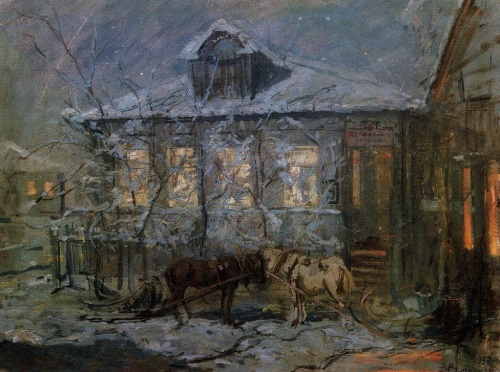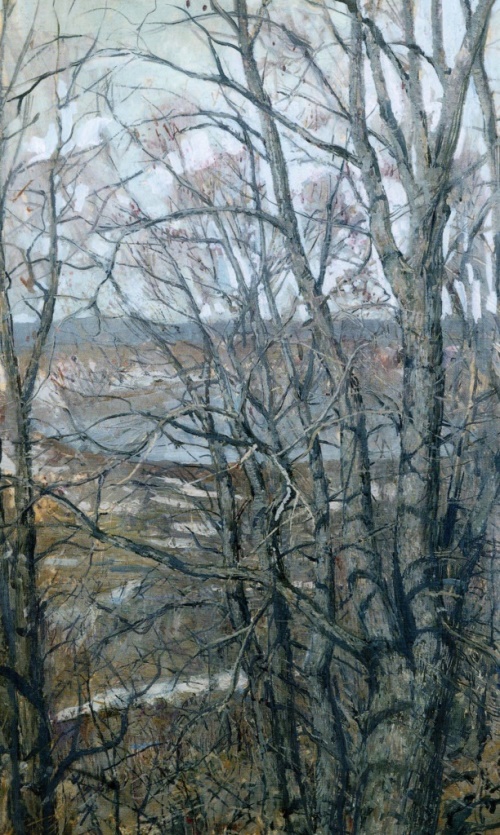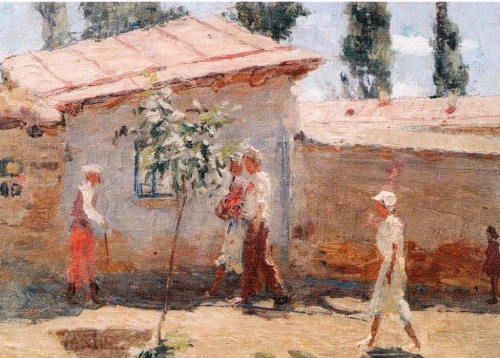Soviet realist painter Nikolai Romadin
Soviet realist painter Nikolai Romadin (1903—1987) – Academician of the USSR Academy of Arts (1967, Corresponding Member – 1953), People’s Artist of the USSR (1971), the winner of the Lenin Prize (1980), second-degree Stalin Prize (1946) and the RSFSR State Prize of Repin (1970). Nikolai Mikhailovich Romadin was born in Samara into the family of a railroad worker Mikhail Andreyevich Romadin. The artist’s father was a soldier in the First World War, he served in the the railway, drove trains. After the collapse of the railway had to work as a simple oiler, was wounded, returned to Samara. After his recovery, he went to work at the depot. Nikolai had to work from the age of eleven, he became a newspaper boy. To successfully sell newspapers, everywhere he had to be the first, to run faster than others along the street to the train station and the pier with a heavy canvas bag, shouting loudly newspaper titles: Volzhsky day! Volga word! To the pier arrived wheel passenger steamers. Leaving them for a short walk, passengers willingly read the local newspapers.

Family of Romadin (right to left) – Father Mikhail, Nikolai Romadin, mother Maria, sisters and grandmother. 1908. Samara
Father of Nikolai Romadin, Mikhail Romadin painted in his spare time, but he forbade his son to touch the sketchbook, fearing that he might become an artist – not serious, in his opinion, profession for men. But the ban was broken, and in the absence of father, his son used paternal paints, drew tiny sketches: the street near the house, the view from the window, the familiar faces. On scraps of paper with a soft pencil he copied from the magazine Niva painting by Rembrandt or “Children running from the storm” by Makovsky. And he drew the sea. He decided to become an artist. This dream did not find any support in the family. His father believed in painting as a hobby thing, not worthy of a man.
Paintings of Nikolai Romadin’s father:
Once Nikolai, leaving on the table his last-earned money, ran away from home. The desire to learn led him into the commune forest school named after Clara Zetkin. Despite the fact that the pupils there were from the former colonies and the homeless, the teachers were from the old school, here even tried to teach French, Greek and Latin. N. Samarin, a music teacher, musician, graduated from the St. Petersburg Conservatory.
In 1921, Romadin gathered in a suitcase all his drawings and watercolors, and went to Moscow to study at the Higher Art School, but failed: there was a civil war, the admitting was temporarily discontinued. With great difficulty, he returned to Samara, trying to continue his education there, but did not abandon the hope to return to Moscow. In Samara, he finished the three-year art college and then, so as not to waste time, successfully passed the exam to the first course of the literary faculty of the Samara University. Perhaps, since then he retained a love of poetry throughout his life.
Despite the resistance of the parents, it is the second time, taking advantage of free travel by rail as the greaser son of railway worker, he went to Moscow at the best time of the Art Institute of Higher Art, to learn from the artist.
Surprisingly there is dissimilarity of artist with his creations. Looking at his landscapes – transparent, exquisite in color, we imagine a calm, balanced person. But he was the exact opposite – a mad energy, and ability to work under minimal conditions. At night, when one candle or in the woods in the bitter cold, he proudly walked into the woods. He was in constant traveling. With a sketchbook and a backpack he set off on a journey – to work. Passing by beautiful scenery, he threw the backpack of a rushing train onto the ground, and then immediately left train, walking to the backpack with a sketchbook and immediately started to work. Back at the station, he usually came back on carts or on passing cars.
Sometimes in the studio the smell of dry red wine supplanted the smell of paint. Then to his workshop came friends – artists of Arts Theater – Belokurov, Levanov, Yanshin, Zhdanov from the Bolshoi Theatre and entirely unfamiliar faces. The sang songs, read poetry – Pushkin, Maikov, Yesenin, Sappho and Ovid were favorite poets of father. He knew a lot of poems by heart, and recited them with brilliance and temperament, when was in the mood.
Museums, books and meetings with friends had no less effect on Romadin than the nature. There were new acquaintances, friends and patrons – Nesterov, Krymov, Academician Filatov. He was very upset that he had not time to learn foreign languages. Ancient Egypt and Gitanjali by Tagore were his favorite books. Romadin twice visited Egypt, once was in Greece, the Netherlands, several times in Italy, in Spain. In Italy, from the emotional shock he fell to his knees in front of Milan cathedral, causing murmurs of disapproval among the other members of the Soviet tourist group. But abroad, he quickly fell ill with nostalgia, wanted to go home.
The last in his life was unfinished painting – workshop of Phidias in Olympia, and even the second, too, unfinished, Clouds – Russian sky, no horizon and rushing clouds in space. His last words before death were addressed to his son. “You are a great painter”. And then, a little more silent, he gathered in the last effort:” I am a a genius artist “… and died.
Soviet realist painter Nikolai Romadin
Source: Masters of painting. Nikolai Romadin. 2001. Illustrated album


























